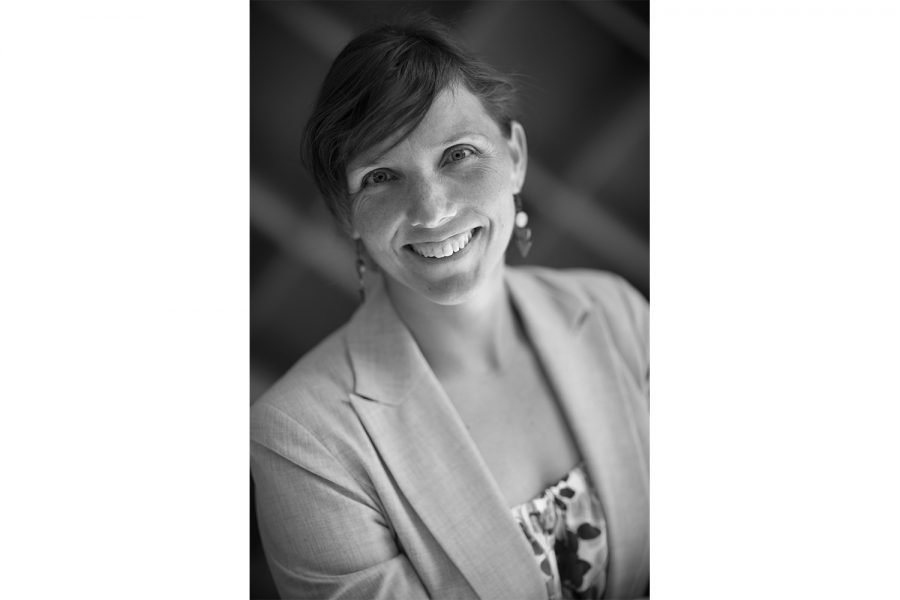UI alum writes analytical art history book on Native American-European first contact depictions
UI alum Kate Elliott’s debut book, published last fall, focuses on examining a unique portion of American art history: 19th century depictions of the first contact between Native Americans and European explorers.
March 29, 2021
The year is 2007. Then-student at the University of Iowa pursuing her Ph.D. in art history, Kate Elliott, attends a graduate seminar about American history paintings — a far more influential class than she could ever have expected.
Over a decade later, she published her first book on the same subject that inspired her years ago.
Elliott now teaches art history and serves as the director of the Center of Excellence for Learning and Teaching at Luther College in Decorah, Iowa. She graduated from the UI in 2009 with her Ph.D. in art history.
Her book Framing First Contact: From Catlin to Russell was published in October 2020 and investigates a century’s worth of paintings of European and Euro-American explorers meeting Indigenous peoples of North America for the first time. As the title indicates, Elliott focuses on the works of American artists George Catlin and Charlie Russell, among many others who were active from the 19th to the early 20th centuries, and why their historical paintings matter in a contemporary context.
Initially, Elliot explored the examination of historical first contact paintings in her dissertation as a Ph.D. student, but the concept stuck with her throughout the years until she had accumulated enough research to complete an entire book.
“I love anything that has the veneer of official history, and I was really just intrigued by the idea that 19th century American artists were constantly trying to depict a past,” Elliott said. “What was even more interesting to me is that a lot of the artists I look at are not history painters. They are landscape painters or painters who specialize in Native American portraiture.”
Although many of the paintings Elliott analyzes depict contact with Native Americans, the book itself doesn’t focus on the Native American experience. Elliott said this is because the paintings themselves aren’t about Native Americans — they use Native Americans as foils to contrast the white explorers and the culture associated with early American nationalism.
“My next book will probably do what I’m not doing here, which is looking at the erasures, what we’re not talking about in terms of state and national history,” Elliott said. “That’s the story that we really haven’t really talked about in visual form, and so I think my next project will be that.”
The professor added that, even though the book mainly focuses on historical works of art from over a century ago, they are also relevant to many contemporary issues. She said the legacy the paintings carry is an important one to dissect, especially with years of history to look back on and take into account.
She also noted there is currently a robust discussion in several state capitols about the place that many of these paintings have in a modern governmental context, because many first contact paintings are located in government buildings. For example, with the insurrection that occurred at the U.S. Capitol in January, some of the paintings mentioned in Elliott’s book are actually in the rotunda and sustained damage during the unrest.
“Seeing the kind of continued resonance of these images in 2021, even though they’re painted in the 19th century, just kind of reminds us that these stories that we tell ourselves about [America] have continued resonance,” Elliott said.
The book is ultimately one that discusses the role of an important but often overlooked part of American artistic culture. Elliott said that, even though it began as a simple research project, it felt like an inspiring enough topic to allow her to continue.
“I think you can find a question that excites you in school that can keep feeding you for a decade,” Elliott said. “And it’s not that I don’t get tired of it, but that it keeps being interesting.”





